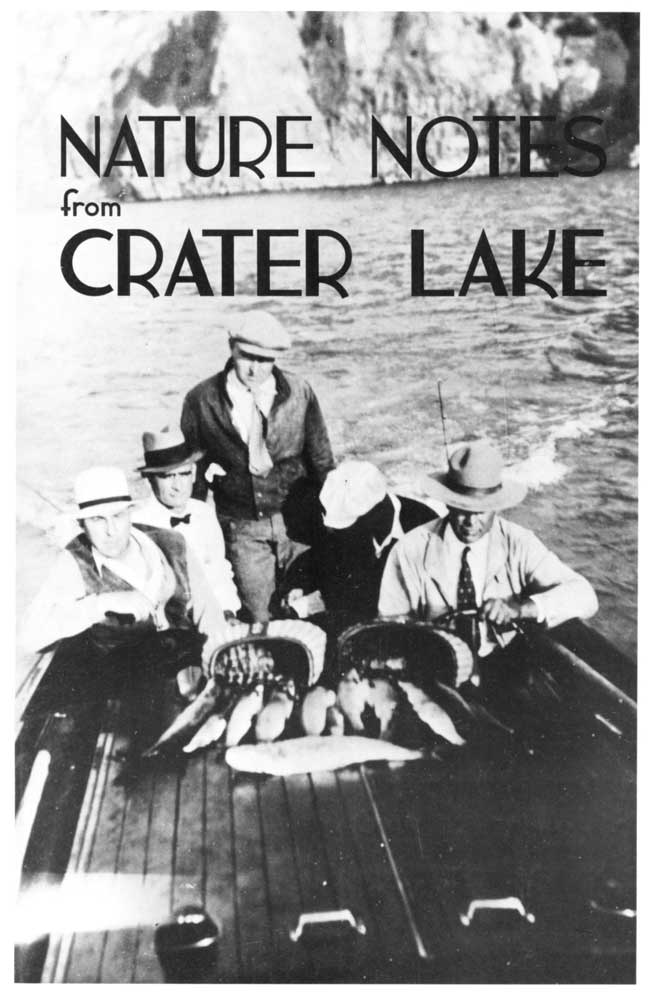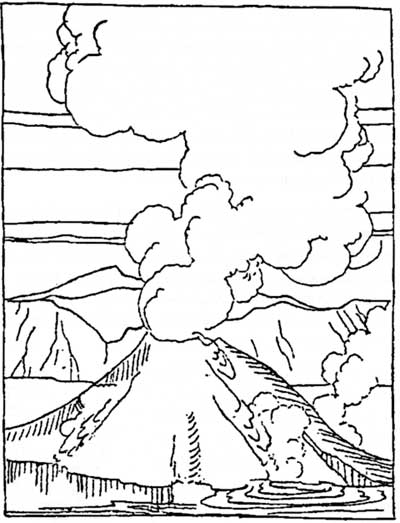Volume 25, 1994
All material courtesy of the National Park Service.These publications can also be found at http://npshistory.com/
Nature Notes is produced by the National Park Service. © 1994
Introduction
This volume of Nature Notes is something of a milestone because this publication has now appeared for 25 summers since its inception in 1928. For three decades it was a casualty of increasing visitation and dwindling budgets for educational programs, but a symposium to celebrate the park’s 90th anniversary in 1992 sparked its revival. As a result, this is the third consecutive year that Nature Notes has been published.
The 1994 Nature Notes share a common characteristic of park friends wanting to share their understanding of Crater Lake and Oregon Caves with others. Authors include employees of the National Park Service, Volunteers-in-Parks, and members of the newly organized Friends of Crater Lake. Although the first article deviates from the usual practice of presenting only original research or observation in Nature Notes, the christening of Mount Mazama is relevant to the experience of park visitors. It is also fitting because the Mazamas were the first group to befriend Crater Lake and 1994 is their centennial.
Other articles in this edition were contributed on a volunteer basis and have not been published previously. Reprinting submissions that have appeared in Nature Notes is encouraged, as long as credit is given to the authors and the Crater Lake Natural History Association.
Established in 1942, the Crater Lake Natural History Association’s purpose is to aid the National Park Service’s educational and resource management programs at Crater Lake National Park and Oregon Caves National Monument. Toward this end it sponsors this edition of Nature Notes from Crater Lake. The association operates three publication sales outlets, two at Crater Lake National Park and one at the Illinois Valley Visitor Center in Cave Junction, Oregon. Proceeds from sales items are used entirely to support the association’s goals. A list of items available for sale can be obtained by writing to the Executive Director, Crater Lake Natural History Association, P.O. Box 157, Crater Lake OR 97604, or by calling (541)594-2211 ext. 499.
Reflections
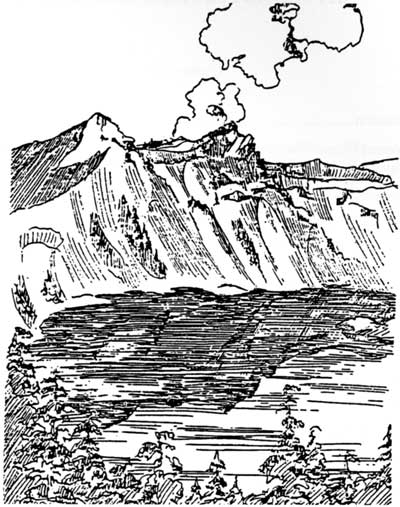
Ernest G. Moll, Blue Interval, 1935. Illustration by Karl J. Belser.
(Watchman and Hillman)
Their war of winds and mountain-strife laid by,
They seek in the blue water a fairer goal
As man may find within a loved one’s eye
Tranquil and clear, the image of his soul.
Christened Mount Mazama
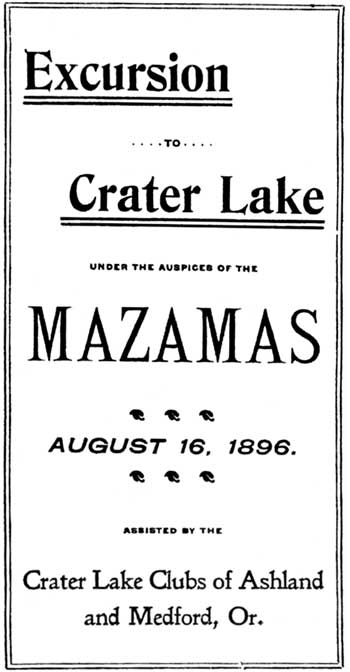
Portion of the Mazamas’ leaflet promoting their trip to Crater Lake.
Courtesy of the Klamath County Museum.
To me Crater Lake is the most impressively beautiful body of water in all the world that I have found. It lies on the very ridge of the Cascades, in Klamath County, southern Oregon. [The lake is] five or six miles in diameter, nearly circular, the vast crater of an extinct volcano…
Wagons may be driven to the very edge of the mountain that contains the lake, where it breaks suddenly off into abrupt spurs and rough precipices that plunge directly 2000 feet below into almost unknown depths. This volcano-hewn rim, unpolished and severe, extends for twenty-five miles around and above the lake, marking the contour of the huge pit wherein the water serenely lies…
In the western portion of Crater Lake rises Wizard Island, a perfect cinder cone…Its steep, sliding walls of pumice, sparsely covered with evergreen timber, make tedious climbing. The top breaks off suddenly into a depression, one hundred feet deep and about four hundred feet in diameter, known as the Witch’s Cauldron. Here the Mazamas held their business meeting, electing a number of new members, many of whom had only qualified a few days before, on the summit of Mt. Pitt. The same evening witnessed the most important ceremony of the expedition.
Several hundred people gathered around a huge camp fire to celebrate the christening of a once majestic mountain, unnamed throughout time’s changes, and remarkable for the deep blue cup it has for centuries protected. Appropriate toasts were offered, introducing interesting facts on the geology and nomenclature of the lake, its fish and fish foods, forest preservation, trees and plants and the wonderful features of the adjacent mountains. The culminating event was the christening of “Mount Mazama” over those rugged slopes. I had the honor to break a bottle filled with melted snow brought from its last crater. The name Mazama will be entered upon the government maps and remain in use. This is right inasmuch as no original name has been sacrificed to commemorate our society…
One of the most interesting features of the expedition, enhancing materially the Mazamas’ pleasure, was the presence of several of the government’s most eminent scientists, who pursued their various studies and observations during our stay. Their interest in the society and participation in its plans was fully appreciated by the members. Every evening instructive talks were held around camp fires, and in the day time these gentlemen accompanied several investigating expeditions around the lake.
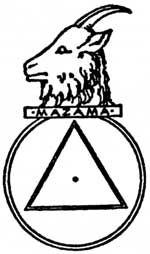 A South American mountain goat is the Mazama’s namesake. The group’s logo highlights this connection and features the U.S. Coast and Geodetic Survey symbol for mountain peaks. |
Frederick Coville, chief government botanist, exhibited a collection of plants growing in this vicinity, and gave a number of interesting talks on their distribution and growth. Several unusual species are found, and among the trees are noticed the noble fir, Alpine hemlock, and Tamarack pine.
Dr. C. Hart Merriam, assisted by Prof. Bailey and other scientists, made a collection of twenty-five different species of mammals, forwarding all the specimens to the Smithsonian Institution. Mr. J.S. Diller is known as the volcano sharp of the government geological survey. One of his favorite retreats is Crater Lake, which he considers more wonderful than any body of water known. He is now engaged in a geological map of the same and has been spending several weeks making observations for this particular work. He is an interesting, and at the same time economical speaker, with the faculty of weaving facts into a charming drapery of language. In fact, contact with these men of exact knowledge is most instructive and on this occasion made doubly fascinating the freedom, the enjoyment and the witchery of the mountains.


